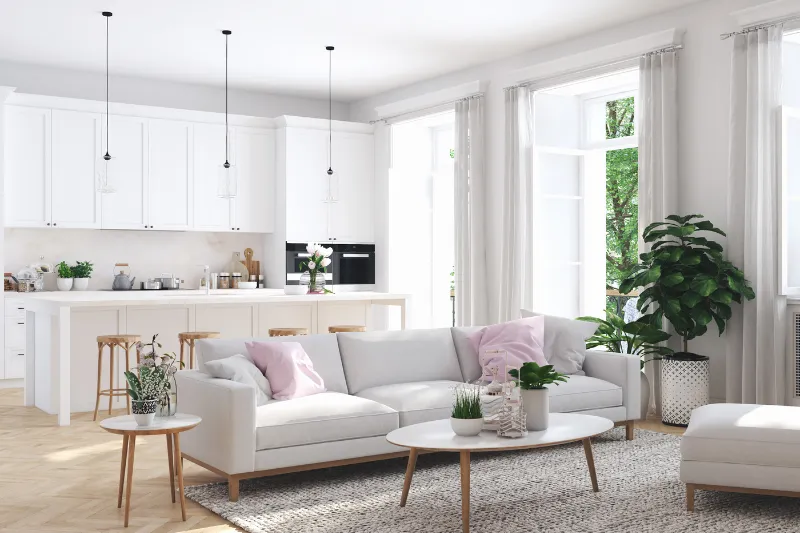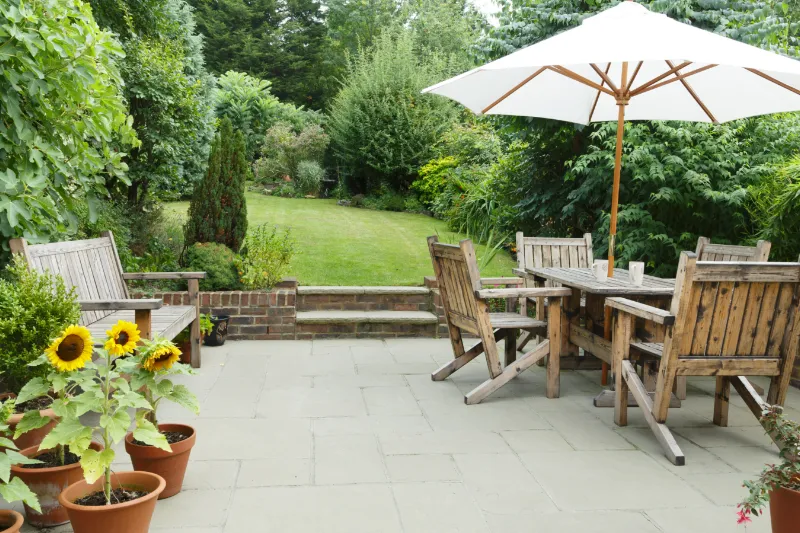As we look ahead to 2024, outdoor living continues to evolve, combining elegance with functionality.…
2024 Home Design Trends: The Future of Living Spaces
As we move further into the decade, the evolution of home design continues to captivate and inspire. The year 2024 marks a pivotal point in architectural and interior design trends, reflecting a blend of innovation, sustainability, and personal expression. This post explores the most popular trends in home design for 2024, focusing on both interior and exterior aesthetics that are redefining modern living spaces.
5 Home Design Trends to Watch for in 2024
1. Sustainable and Eco-Friendly Materials
Sustainability is no longer just a buzzword; it’s a crucial element in home design. In 2024, eco-friendly materials dominate, with homeowners and designers prioritizing natural, recyclable, and sustainable options. Bamboo, reclaimed wood, and recycled glass and metals are at the forefront, offering both beauty and environmental responsibility. This shift towards sustainability reflects a growing awareness of environmental impact and a desire to make more responsible choices in home design.
The use of bamboo is particularly notable, as it grows quickly and can be harvested without causing lasting damage to ecosystems. Reclaimed wood, sourced from old buildings and other structures, adds character and history to a home while reducing the demand for new lumber. Recycled glass and metals are also gaining popularity, offering a unique aesthetic that blends well with various design styles. These materials not only reduce waste but also often come with interesting textures and colors, adding visual interest to home interiors.
2. Smart Home Integration
Technology continues to play a significant role in home design, with smart home systems becoming increasingly sophisticated. Automated lighting, energy-efficient appliances, and home automation systems that allow for remote control of security, temperature, and entertainment systems are becoming standard, blending convenience with modern aesthetics. The integration of these technologies makes homes more efficient and comfortable, providing homeowners with greater control over their living environments.
Smart home systems are designed to be user-friendly and often come with voice control options, making it easy to adjust settings with simple commands. Energy-efficient appliances, such as smart thermostats and LED lighting, help reduce energy consumption and lower utility bills. Home automation systems also enhance security by allowing homeowners to monitor their properties remotely, ensuring peace of mind whether they are at home or away. These advancements in technology are making smart homes more accessible and appealing to a wider audience.
3. Indoor-Outdoor Living
The line between indoor and outdoor living spaces is blurring. Large glass doors and windows, outdoor kitchens, and comfortable outdoor living room setups encourage a seamless flow between the interior and exterior, enhancing natural light and creating a sense of spaciousness. This trend reflects a desire to connect more closely with nature and make the most of outdoor spaces.
Expansive glass doors and windows allow for unobstructed views of the outdoors and let in ample natural light, creating bright and airy interiors. Outdoor kitchens, equipped with modern appliances, make it easy to cook and dine al fresco, adding a new dimension to entertaining at home. Comfortable outdoor furniture, such as sofas and lounge chairs, extends the living area beyond the walls of the house, providing additional space for relaxation and socializing. This blending of indoor and outdoor spaces not only enhances the living experience but also increases the functionality and appeal of the home.
4. Bold Colors and Patterns
Gone are the days of safe, neutral palettes dominating every space. In 2024, bold colors and patterns make a statement in home interiors, from vibrant wall colors to eye-catching tile designs. These elements are used to inject personality and dynamism into spaces, reflecting homeowners’ individuality. The use of bold colors and patterns allows for greater creativity and personalization in home design.
Vibrant wall colors, such as deep blues, rich greens, and warm yellows, add depth and character to rooms. Eye-catching tile designs, featuring intricate patterns and bright hues, become focal points in kitchens, bathrooms, and entryways. Bold fabrics and wallpapers also play a role, bringing texture and visual interest to various areas of the home. This trend encourages homeowners to experiment with color and pattern, creating unique and lively spaces that stand out.
5. Minimalist Design with Personal Touches
While minimalist design continues to be popular for its clean lines and uncluttered spaces, there’s a growing trend towards incorporating personal touches. Handcrafted items, unique pieces of art, and personal memorabilia are being integrated into minimalist settings, creating spaces that are both sleek and personal. This combination of simplicity and individuality results in homes that feel more welcoming and reflective of the homeowner’s personality.
Handcrafted items, such as pottery, textiles, and furniture, add a human element to minimalist interiors, emphasizing craftsmanship and authenticity. Unique pieces of art, whether paintings, sculptures, or photographs, provide focal points and convey the homeowner’s tastes and interests. Personal memorabilia, such as family heirlooms and travel souvenirs, add a sense of history and meaning to the space. By blending minimalism with personal touches, homeowners can create environments that are both aesthetically pleasing and emotionally resonant.
Conclusion
The evolution of home design in 2024 is marked by a blend of sustainability, technology, and personal expression. As homeowners seek to create spaces that reflect their values, lifestyles, and personalities, these trends offer insight into future aesthetics. Using eco-friendly materials, integrating smart technology, or embracing bold design choices shows 2024 home design is continually evolving. This evolution in home design offers endless possibilities for innovation and creativity in both form and function. This dynamic landscape ensures home design remains vibrant, exciting, and adaptable to new needs and preferences. Celebrating individuality and environmental consciousness, these trends highlight the ever-changing nature of home aesthetics and functionality.





